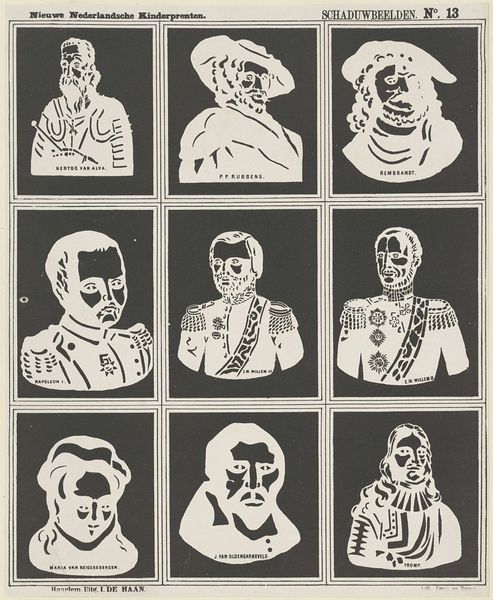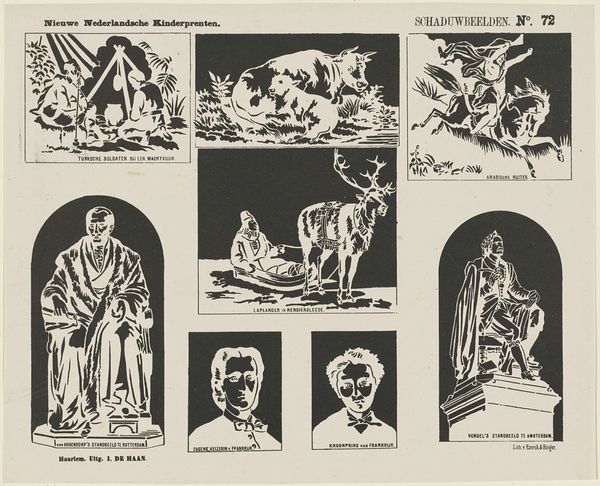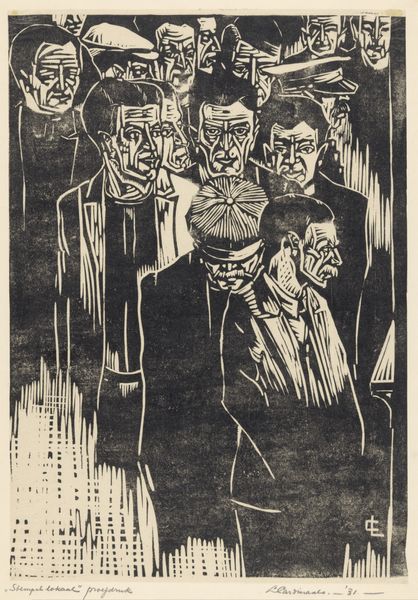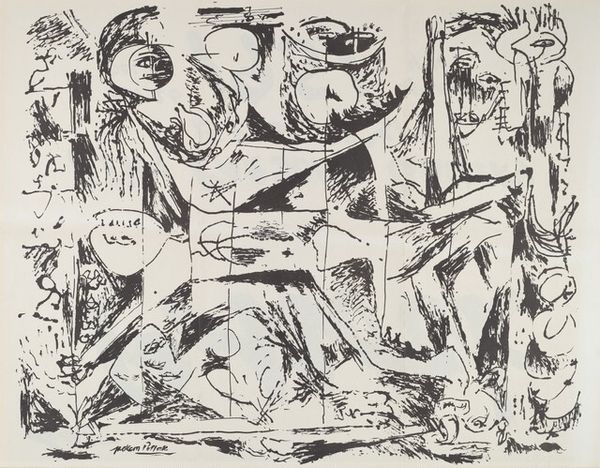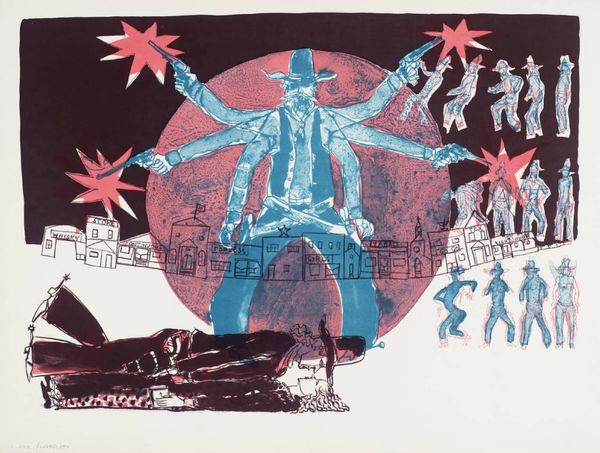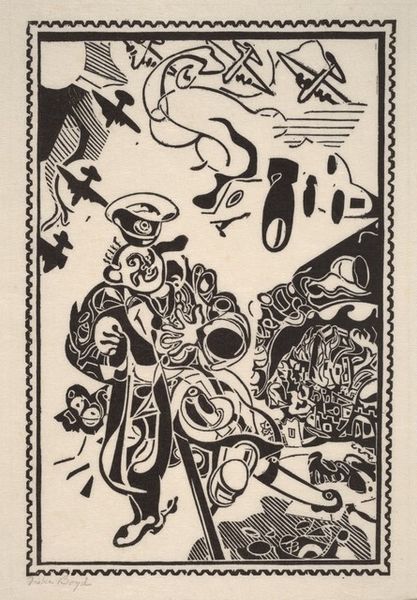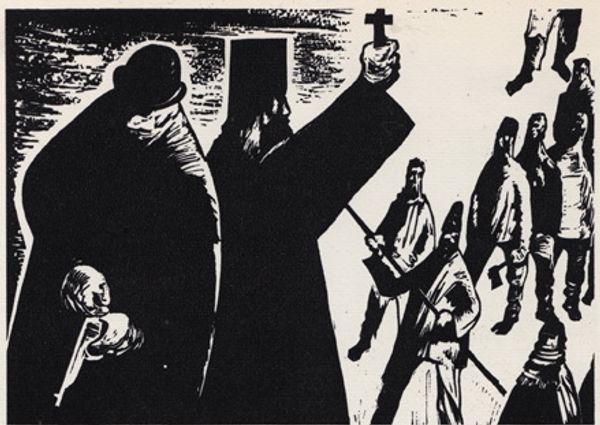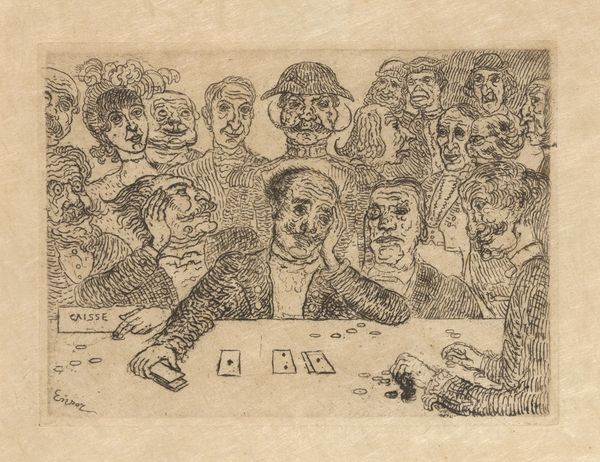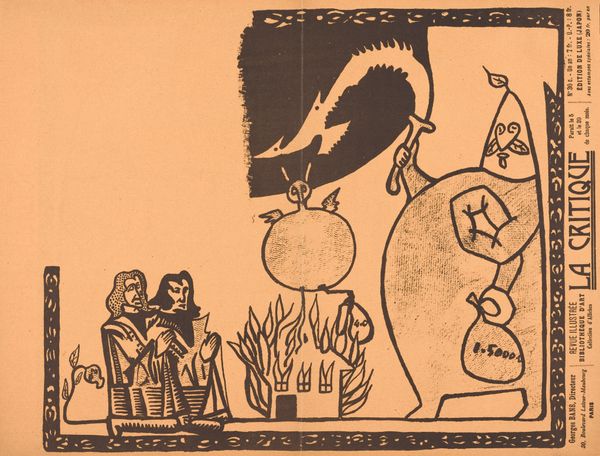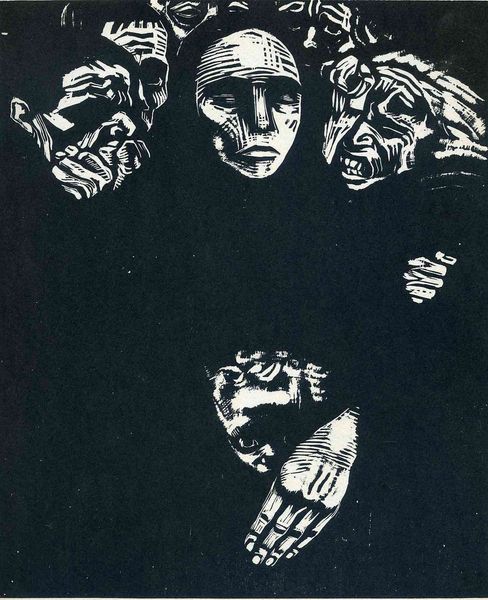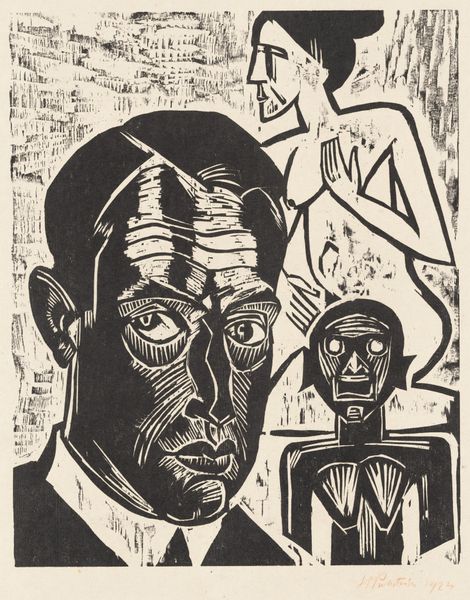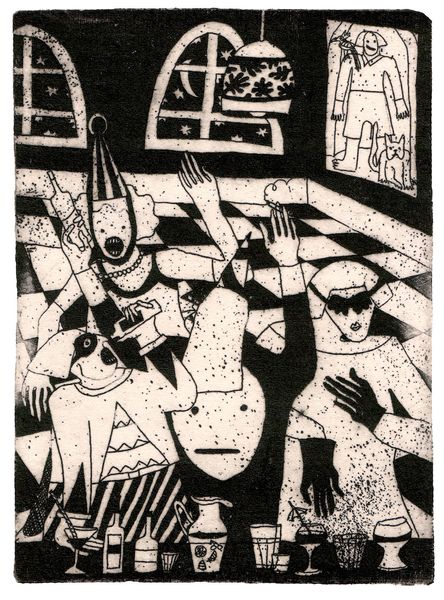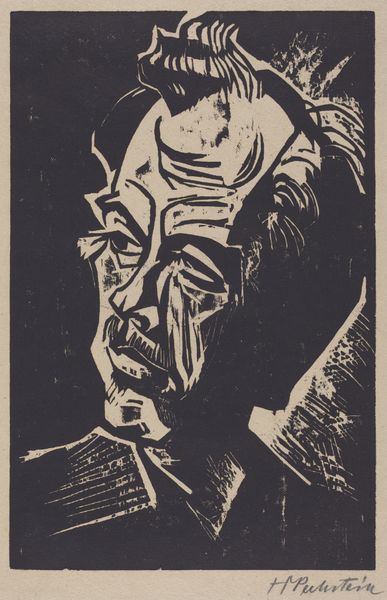
graphic-art, print
#
graphic-art
# print
#
figuration
Dimensions: height 332 mm, width 421 mm
Copyright: Rijks Museum: Open Domain
Curator: Today, we're looking at a print titled "Schaduwbeelden" - that translates to "Shadow Pictures" - made between 1875 and 1903 by Jan de Haan. Editor: It feels like a sociological study done in silhouettes! So graphic, like stencils for a particularly austere puppet show. What was the intended use of these prints? Curator: They were produced as children's prints, featuring various figures, from royalty like Olga, Queen of Greece, to animals and even dancers, offering a wide array of characters and scenes. Editor: I’m immediately drawn to the production itself. Look how the stark contrast between black and white creates these almost unsettling cut-out figures. I wonder what type of printing process would’ve made these. Given the date and the uniformity of the image, I would expect some lithographic prints, perhaps? How accessible would have these prints been, materially? Curator: Lithography definitely makes sense, as these were meant to be affordable and widely distributed. These were the kind of images that fueled a child’s imagination, offering visual stimulation without overwhelming detail. Imagine the stories sparked from a simple depiction of a "hare." Or Bismarck looking like a haunted bust! Editor: Ha! And the “dancing bajaderes”, they definitely stand out, posed in this very Western imagination of the exotic "other." Also interesting to note the visual language being consumed here by children, constructing this social taxonomy through cheap reproducible prints. Curator: Right. Though the stark shadows almost abstracting reality, giving way to personal interpretation—these shadows speak volumes, even now. Editor: Indeed. It's fascinating how these mass-produced images served as both entertainment and silent educators of societal values. Material conditions shaping perception itself, I guess! Curator: A wonderful way to look at it. And a reminder of how even the simplest art can reflect complex layers of society. Editor: Precisely. Leaving us, perhaps, to see what new shadows we create with the media we choose to produce.
Comments
No comments
Be the first to comment and join the conversation on the ultimate creative platform.
